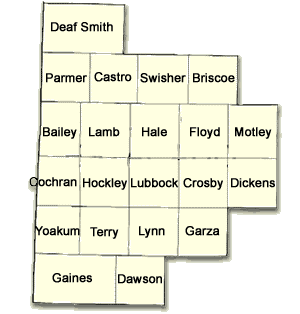|
| Home | | About Us | | Water Planning | |
Groundwater | |
Conservation | |
Environmental Flows | |
Drought Mgmt. | |
Resources | |
Search | | ||
|
Region O - Llano Estacado
2005 Regional Water Plan Overview  Regional Facts
Basic Plan Facts
What's at Issue?
This region is unique in that it is one of only two region whose water demand is expected to decrease over the planning period. While the population is projected to increase slightly, a decline in agricultural activity is expected over the 50-year planning period. Groundwater resources in the region have not been managed sustainably and future generations may not have reasonable access to groundwater. The Plan proposes a 50 percent rate of decline from existing aquifer levels over the next 50 years.Despite the anticipated drop in the regional water demand, Region O has yet to identify and develop additional resources in order to compensate continued exhaustion of groundwater reserves in the region. This area does not have the luxury of abundant surface water resources to draw upon. In addition, many of the historical springs and spring-fed streams have ceased to flow due to increased pressure on the region's groundwater reserves. Some of the major strategies proposed to fulfill the region's water needs include precipitation enhancement; brush management; brackish groundwater desalination; and drilling additional municipal wells. Several municipal water strategies, including expanding the capacity of groundwater supply in the Canadian River Municipal Water Authority and constructing Post Reservoir, do not appear to have identified customers within the region. Action Items
Here are some of the items the Region O Planning Group must address.For conservation and drought management, the plan needs to...
To secure the protection of flows for fish and wildlife, the plan needs to...
To ensure that only the most economically sound water supply strategies are implemented, the plan needs to...
|
||||||||||||||||||||||||||||||


 Region O
Region O